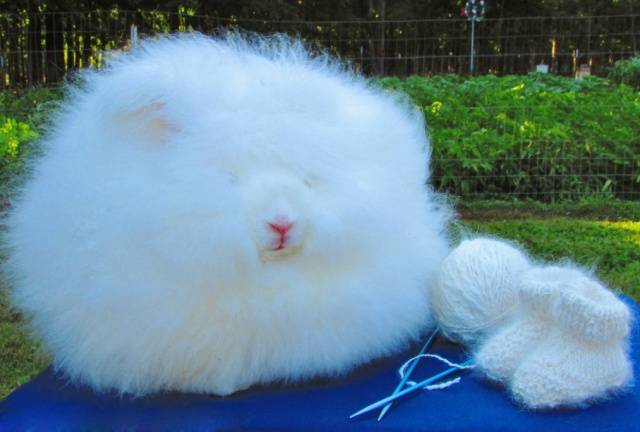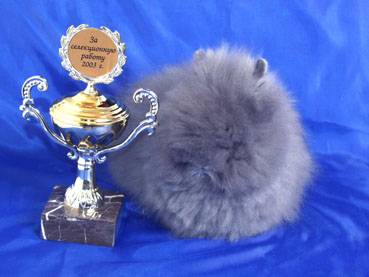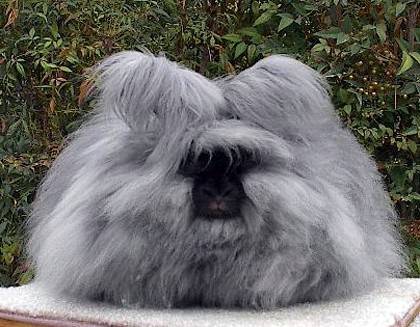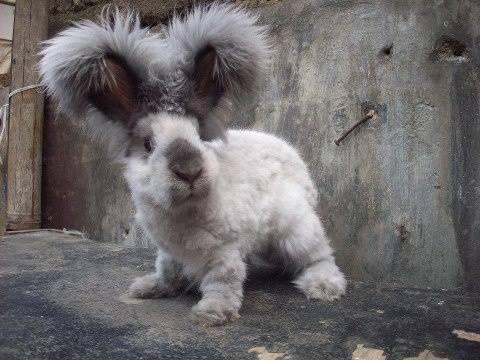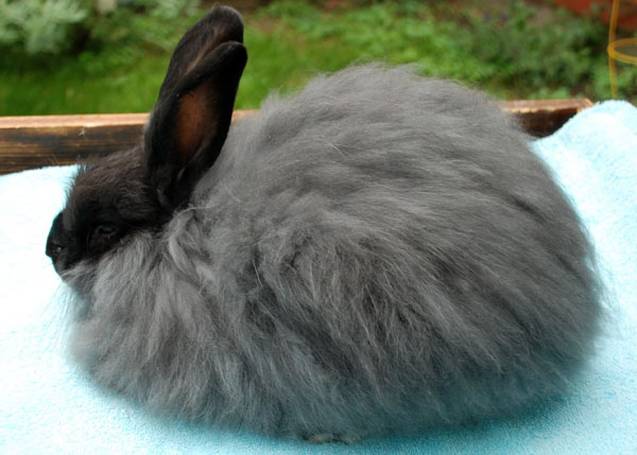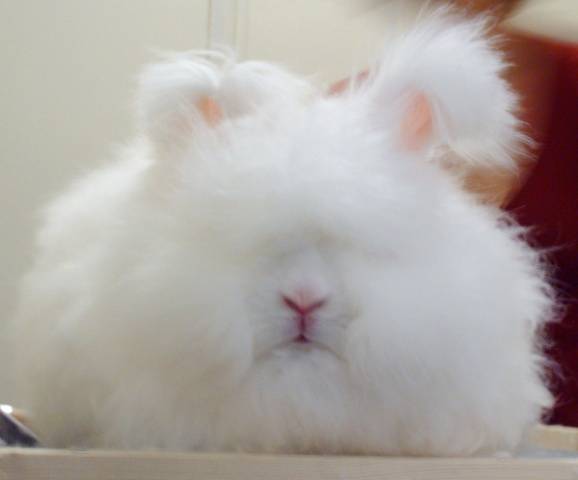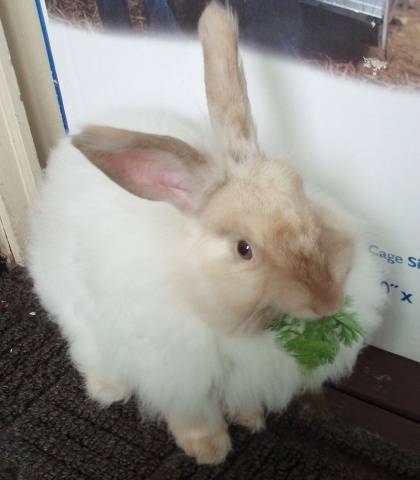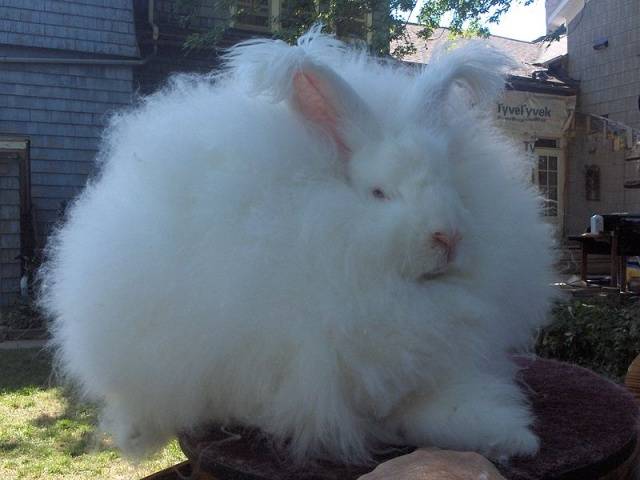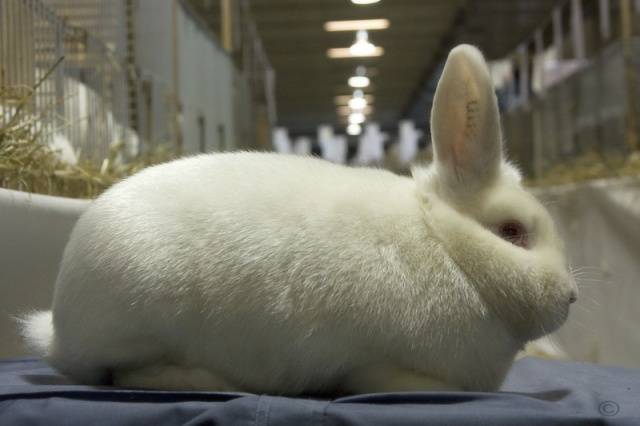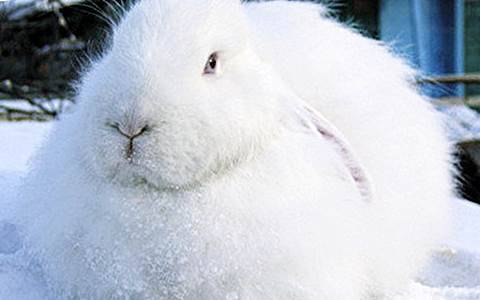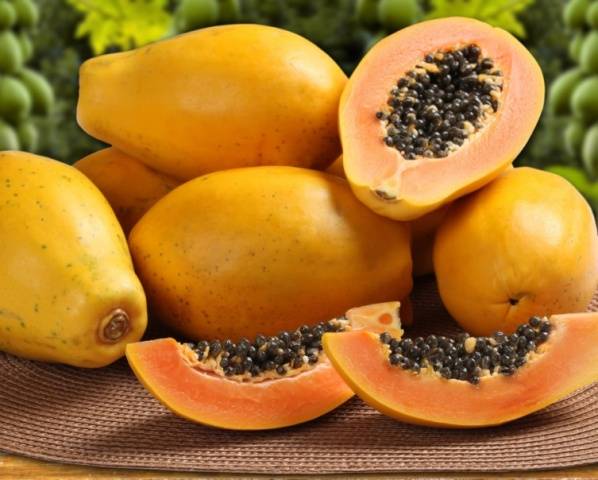Content
Either Turkey is really an amazing country, or there is some factor that affects the length of downy hair in animals, or simply the "discoverers" of long-haired breeds of farm animals know how to create myths, but all domestic animals with fluffy long hair are considered to be immigrants today from the outskirts of the Turkish city of Ankara. And all these animals in the name of the breed necessarily have the word "Angora". Angora rabbits are no exception.
The long-haired rabbit was originally found, of course, in Turkey, from where it was taken to Europe. The cute fluffy animal quickly gained a lot of fans, but there were not enough purebreds for everyone. And the climate in many countries was not very suitable for the southern animal. When crossing long-haired animals with local breeds of rabbits, it turned out that long hair can be inherited, even if not in the first generation. As a result, European countries began to have their own Angora rabbit breeds. Now in the world there are more than 10 Angora breeds. Of these, 4 are recognized by the American Rabbit Breeders Association. The rest are either recognized by national organizations, or work is still underway on them.
Such a new, not yet formalized breed is the Angora dwarf rabbit. Previously, all breeds of Angora rabbits were bred not for fun, but to obtain wool from them for making cashmere - the most expensive woolen fabric. It was rabbit hair that made cashmere so soft, warm and expensive. Even wool angora goat inferior to rabbit. Therefore, the Angor has never been dwarf, it is not profitable for the producers of rabbit wool. The usual weight of the Angora rabbit, depending on its variety, ranges from 3 to 5 kg.
But the demand for wool, even for cashmere, is falling, although today Angora people are bred in China for the sake of wool. But there is a growing demand for miniature fluffy glomeruli that cause affection by their very appearance. It is convenient to keep small rabbits in the apartment, although many confuse the concepts of “decorative rabbit"And" dwarf or miniature rabbit ". An ordinary Angorese weighing 5 kg can also be decorative, if it is kept not for the sake of wool, but as a pet. The miniature Angora rabbit is no longer suitable for industrial breeding, but it can bring a lot of pleasure to its owners.
Miniature Angora rabbits
The ways of breeding miniature angoras are different. Some breeders simply select the smallest representatives of the breeds already available. Others add dwarf breeds of rabbits to the Angora.
Russian dwarf angora
In 2014, the breed of miniature rabbits "Russian Dwarf Angora" was entered into the State Register of Russia. True, if you focus on the words of the breeders themselves, so far this is not a breed like all long-haired animals that meet certain requirements are introduced into the studbook. That is, work is still underway on a fairly motley (pun intended) livestock of long-haired rabbits with low weight. The weight of the animal must not exceed 2 kg.
Desirable traits of the future breed
As a final result, breeders want to see an animal with a weight of 1.1 - 1.35 kg, a strong knocked down body, a short wide head and relatively short ears no more than 6.5 cm long.In contrast to the western Angora, the Russian Angora should have a good overgrowth heads. In many Western Angora, the head is almost completely covered with short hair, which is undesirable for the Russian dwarf Angora.
The main issues being worked on are crooked paws - a legacy of the original herds exported from Poland and instability in the length of the coat.
Great attention is also paid to the quality of the wool. It should be thicker than that of the industrial angora, but at the same time remain fluff, without passing into the guard hair, in order to preserve the appearance of the rabbit, as in the photo above. It is possible to increase the amount of awn, which will not allow the fluff to fall off and will make it easier for owners to care for the rabbit at home. Here the breeders themselves have not yet decided in which direction to move.
The colors of the Russian Angora can be white, black, blue, black-piebald, pego-blue, red, red-piebald.
American fluffy fold rabbit
The fluffy ram was obtained by crossing, first, a Dutch Fold with an English butterfly to obtain a piebald color, then with a French Angora, since the resulting offspring had deteriorated wool. The maximum weight of the American fluffy ram does not exceed 1.8 kg. In fact, this is still not a breed either, since the spread in the exterior and length of the coat is quite large and it happens that a fluffy rabbit is suddenly born from the Dutch Fold. The point is that the gene of the French Angora is recessive and, recorded as Dutch Fold, the producers actually carry the "Angora" gene.
Desired breed standard
The body is short and compact. Legs are thick and short. The animal's head should be kept high. The ears hang down strictly at the sides. The hair on the head is semi-long. The length of the coat on the body is 5 cm. The colors are very diverse.
Nevertheless, the coat of this breed is coarser than that of real Angora and it is much easier to care for it. Grooming requirements include daily finger fingering to prevent tangling.
Large breeds of angora rabbits
The most common and recognized breeds around the world are the English and French Angoras plus the Giant and Satin Angora rabbits. To these breeds should be added the German Angora, not recognized by the States and registered by the National Association of German Rabbit Breeders, and the Soviet White Down Rabbit. Today, these breeds should be added to the Chinese, Swiss, Finnish, Korean and St. Lucian. And there is a suspicion that these are far from all currently existing breeds of Angora rabbits.
All angora downy rabbit breeds have a common ancestor, but, as a rule, local breeds were added to all of them for greater resistance of animals to changed habitat conditions. Turkish purebred Angora are unlikely to withstand the conditions even in Europe, not to mention the Russian frosts. And today, keeping the Russian Angora rabbit is impossible on the street. Even modified into a white downy, this breed requires keeping in a warm room in winter.
English and French Angora rabbits
Pictured is an unshorn English Angora.
This is it after the haircut.
Without knowing the nuances of caring for angora rabbits, you cannot say from the photographs that this is the same breed.
Photo of the French Angora rabbit.
Until 1939, there was only one breed of rabbits called the Angora Down. Due to the presence of two very different lines from the 39th year, the breed was divided into the English Angora rabbit and the French Angora.The photo shows that the English Angora has an overgrown head. Even on her ears she has long hair, which makes her ears seem to be semi-erect. The paws are also covered with long hair. The English version has a longer coat than the French Angora.
The English Angora rabbit is the smallest breed recognized in the United States. Its weight is 2 - 3.5 kg.
The color of the English Angora can be white with red eyes, white with dark eyes, monochromatic of any color, agouti, piebald.
In the photo, an English white angora rabbit with red eyes, that is, an albino.
So about red eyes, you have to take the word of the author of the photo.
In the French Angora, the head is completely covered with short hair. The ears are "bare". On the body, the coat is distributed in such a way that the body appears spherical, but on the paws there is short hair.
In contrast to the English, the French Angora is one of the largest Angora breeds. Its weight is from 3.5 to 4.5 kg. The colors of these rabbits are similar to their English relatives.
Giant angora
The largest Angorese bred by crossing German Angoras, French rams and Flanders giants. This is the only breed that has only a white color. All giant angora are albinos.
Satin Angorean
The animal of this breed is somewhat similar to the French Angora. But what is there to be surprised if this breed was bred by crossing a satin rabbit with a French Angora.
Pictured is a satin rabbit.
This Angora got the name “satin” for the special shine of the coat, inherited from the second parent breed.
The wool of the satin angora is smaller than that of the French, and it has a different structure. It is believed to be more difficult to spin as it is more slippery. Officially only solid colors are allowed. In our days, piebald has also appeared, but it has not yet been officially approved.
White downy
Animal of Soviet production. Bred white down in the Kirov region by crossing local animals with French Angoras. Further, the selection proceeded according to the strength of the constitution, viability, down productivity and an increase in live weight, which in an adult animal is 4 kg. From white down, you can get up to 450 g of wool, in which the down is 86 - 92%.
White downy is much better than other Angora adapted to Russian natural conditions.
Angora rabbit care
In principle, the content of these animals is no different from the content of any other breed of rabbits. These animals eat the same thing as their relatives. The main difference is long hair.
If the wool clogs the intestines, the animal will die. As a preventive measure, Angora people are fed fresh hay without restrictions. Hay prevents the formation of wool mats in the animal's digestive tract.
Angora wool must be brushed periodically to prevent it from falling into mats.
English, Satin and White Down breeds require brushing every 3 days. Collecting down from them is carried out 2 times a year during molting.
German, Giant and French Angora do not shed. The wool is completely cut off from them once every 3 months, collecting 4 harvests of fluff a year. These animals are recommended to be brushed once every 3 months. This is clear. There is no point in combing short hair, but it is time to cut the long one. Before trimming the animal, it is better to comb it.
German Angora haircut
Lifespan and breeding of Angora rabbits
Angoras live as long as other rabbits, that is, 6 - 12 years.Moreover, the better the care of the animal, the longer it will live. Unless, of course, we are not talking about a rabbit farm, where the order is completely different. The length of time the animals live on the farm depends on their value. Particularly valuable are discarded at the age of 5 - 6 years. But usually the life of rabbits is 4 years. Then the rabbit's breeding rates decrease and productivity decreases. Keeping it becomes unprofitable.
Young Angora for breeding is selected from six months. The length and quality of the coat are evaluated. If the parameters do not suit the owner, then, having removed the wool crop from the animal 2-3 times, the animal is sent for slaughter.
The requirements for breeding Angora are the same as for breeding other rabbits. For hygiene reasons, the owner of a decorative animal can cut the hair around the female's genitals and nipples.
Conclusion
When starting angora rabbits, you should be prepared for the need to care for your hair, no matter what the breeders of this breed say. Especially if you are breeding Angora not for business, but for the soul and you want your pet to win the show.
